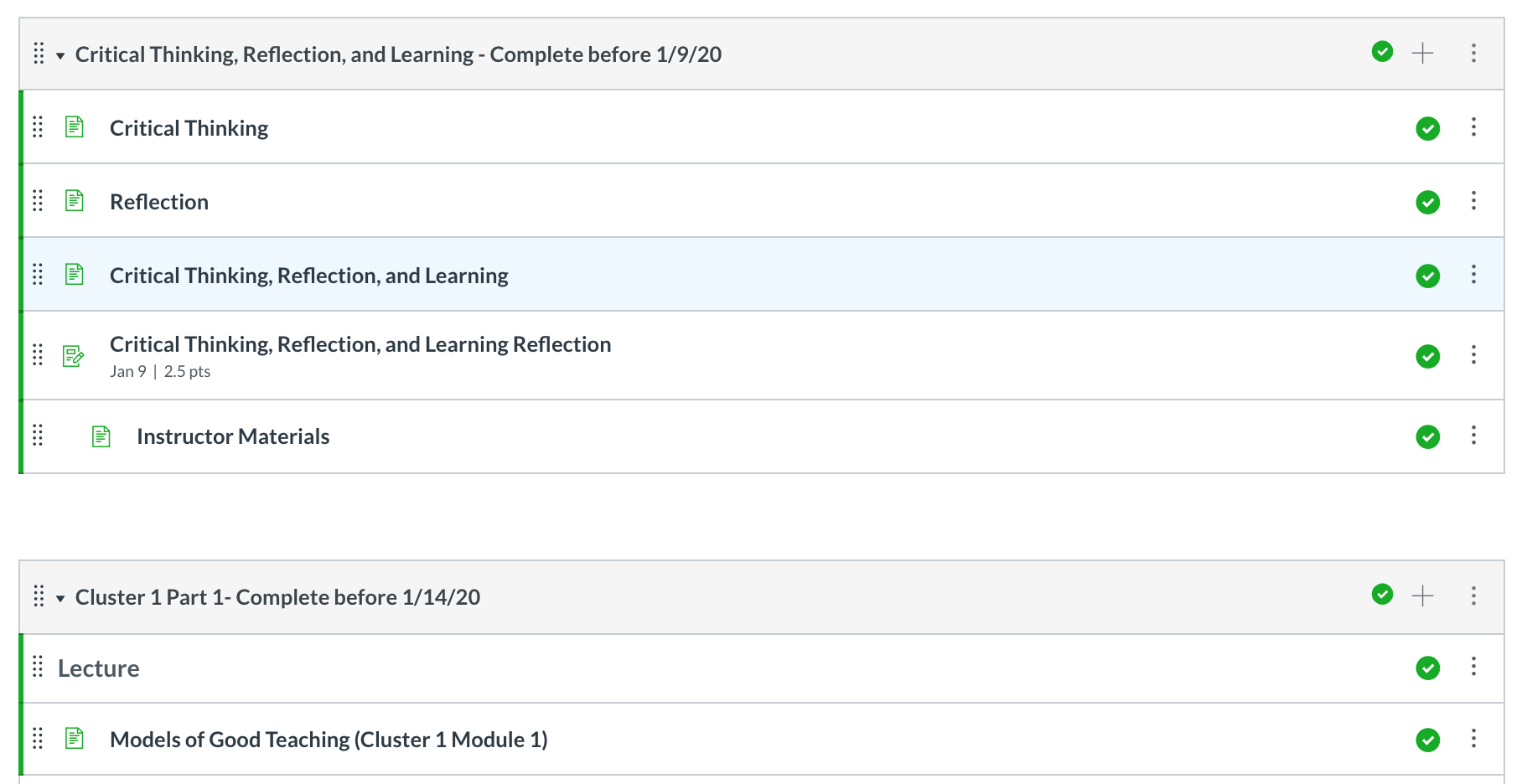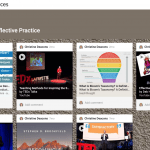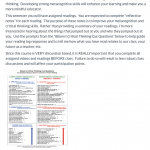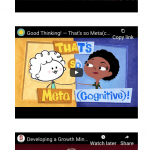For several years now, colleges and universities have been adopting online learning platforms as many have believed that online learning is the way higher education will continue being relevant in coming years. Whether you ascribe to this belief or not, it is true that there are many benefits to utilizing your institutions online learning system. First and foremost, we need to acknowledge the fact that the college students of today are digital learners and that the vast majority of them are very adept at navigating certain online platforms. Secondly, we need to acknowledge that creating at least a basic online course shell that includes a syllabus, information about major assignments, and grading is a big step towards transparency for our students. I can’t tell you the number of times every fall that I sit down with a first semester student and ask them how their grades look and they tell me they have no idea. We know that one key to improved student learning in early and frequent feedback. Providing this gives students the opportunity to make adjustments to how they are approaching the class so that they can improve their performance. Some instructors do this effectively without an online course shell presence – but imagine how much better the student experience would be if they were able to pull up their online grade book to see how they were doing in all of their classes at any given point. How much easier would it be for them to make decisions about how to spend their time, what they should be working on, etc.
Last week our institution closed campus and migrated to fully online classes because of the international health crisis. A very large number of our instructors had never done anything online prior to this emergency. They are now scrambling to figure out what platform to use for instruction (when in doubt, go with whatever platform your institution uses and will support!), and how to get it set up and running in real time for students. I had a conference call with a small group of our students today. To say that they are extremely concerned would be quite the understatement. I heard from one students that additional assignments have been added for her class and that due dates had been bumped up. Another student told me that her instructors had added so many written papers to her coursework that there is no way she was going to be able to keep up – in fact she has 1 – 5 page papers due in all 5 of her classes in the next 2 weeks. How overwhelming for a first-year student – even one who earned a 3.85 GPA in her first semester. I managed to talk my students through some of these issues and recommended frequent feedback to instructors as this may be the first time that many of them are actually teaching online…. which brings me to the heart of what I want to talk about. Online LEARNING.
Creating a course shell for your class and adding alot of assignments does not mean that ANY learning will take place with your students. Let’s review what we know about learning. In order for real learning to take place, whatever you are doing has to be relevant so that students can make connections to the new material they are learning. It also needs to be engaging so that students become active learners – attentive to the material in a thoughtful and meaningful way. Online learning can be both relevant and engaging. Additionally, you don’t have to be a super tech genius to make it both relevant and engaging for your students. It does however take some time to create an engaging online course – you can’t just “wing it”. I actually flipped both classes I taught this year with pretty good success. I managed to do this and still maintain my sanity – so I thought I would share with you some of the tools and tips I used to do this.
First and foremost, I did not attempt to recreate the wheel. In other words…. there is already alot of really good and engaging content on the web that you can link to for your class. Let me give you and example. I created modules in my Educational Psychology course for all of the main topics we are going to cover in a term. They mostly coincide with the chapters of our text. One of the first modules in my online course shell talks about the importance of critical thinking and reflection as it related to teaching and learning.
As you can see, I’ve titled the cluster to identify which “cluster” in our text it is related to and when it is due. I’ve set it up to walk students through the content in a particular progression.
I try to always include short (2 – 3 minute) Youtube videos in my online course shell if I can find ones that are engaging, accurate, and well made. In this particular module, I included more videos that I typically do as it was the very beginning of the term and I wanted students to get a good understanding of the material we were going to be discussing in class. There wasn’t any associated reading related to most of the video content, so I was counting on the videos to provide context for students. I only include 1 – 3 short videos on a given topic when there is also associated reading. I encourage students to watch the videos first and then complete the reading (videos provide context for the reading which tends to promote more engaged reading), and then complete any associated assignment. For this particular module, students were instructed to write a brief reflection about how critical thinking, reflection, and the idea of growth mindset can influence learning.
I can tell in week 1 by monitoring the course shell analytics how well I have designed this module. I pay attention to things like how much time did the student spend in the course shell and how many page clicks did they have. I can also tell by the content and quality of their work whether or not they actually completed the videos and reading. When we meet face to face, we can then spend our time in deep discussion about the content. I break the class into groups for these discussions and I circulate to keep the discussions flowing. Throughout the class, I’ll have groups report out. The students really like this format. Not only do they find it more engaging, but they report learning significantly more in this class than in other classes where they just read a textbook and attend lecture.
Now that we have transitioned to fully online classes, I am making a few adjustments to my remaining modules since we will no longer be meeting face to face. This week students were supposed to be sharing information about journal articles they found related to how religion affects development and learning. Had we met face to face, they would have presented their findings during their group discussions. Instead, I created an online discussion where each student created an initial post sharing the information they found about how religion influences learning. I set the discussion up so that students were grouped according to the groups they had been in all term in our physical class. Everyone’s initial post was due by the 13th. Student were then instructed to go in and provide feedback to their the initial posts from everyone in their group. I provided specific guidance regarding what I wanted them to cover in the initial post and what I expected in terms of feedback – no 1 or 2 sentence responses would be accepted. I’m looking for depth of thought, connections to things we have been talking about in class so far this term, reflective content, details, etc. I am happy to say that I was not disappointed.
Our online platform also allows for conferencing. I am going to test this feature this week to see if I can add this into our weekly interactions moving forward as one of the things students report that they like the most about this class is the opportunity to talk about issues and work through them in their groups. I’m not sure we can get to the same depth of discussions in an online format that we did in the actual classroom. Time will tell.
Here are a few final thoughts related to meaningful online learning.
- Make sure that you provide early and frequent feedback. You need to go beyond just listing a grade. Explain why you awarded the grade – what could your student have done better? What did you like about what was turned in? Good insights? Thoughtfulness? Elaboration?
- Don’t turn your course shell into an e-book…. If you want to keep your students engaged, you need to mix it up. Include short videos, quizzes, mini-assignments, discussions, etc. We want students to engage with the course material, not be bored by it.
- Keep it organized. Make sure you set up your course shell in an organized fashion that students can easily navigate. If you are unsure how to do this, contact you online campus support for help. If you can’t find anyone on campus who can help you, the LMS (learning management system) provider should have support available. Also – google and youtube can be great resources. It’s amazing what you can figure out how to do from a short 5 minute youtube video.
- If you want your students to be engaged online, you must be engaged online. Interact with your student in their discussions. Provide meaningful feedback to student work – explain, provide details, elaborate, etc. Help students figure out how to be successful in your class – don’t make them guess.
- Provide examples of good work when you can. Here is an example of what I mean. My student gave me permission to use this so that other students could get a better idea of what I was expecting when I asked them to provide a reflection based on a few writing prompts: annotated-EDPS322TypedNotes1-9.docx. I don’t want my students to have to guess at what I consider to be good work. Oftentimes they have no idea what we are expecting from them. If you have examples of exceptional work from students who took your course in previous semesters, get their permission to share it and use it as a tool so that your students can see what exceptional work looks like.
I hope that all of my fellow educators out there are keeping their heads above water as we dive into uncharted territory – unexpected transition to fully online learning. Know that you aren’t alone and that there are thousands of educators out there struggling to figure out how to do right by their students in a very fluid situation. Reach out to your colleagues – collaborate when you can. Be fearless! You got this.






